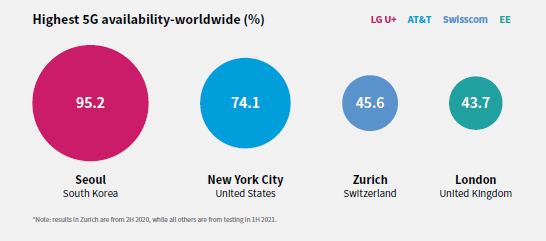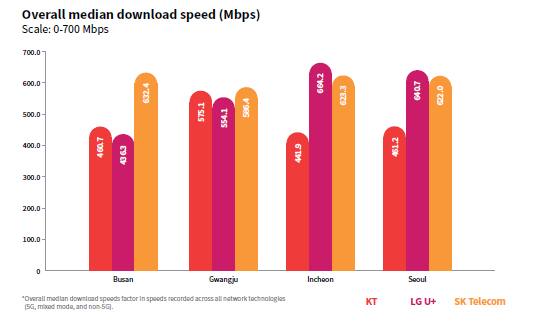Verizon called dibs to 5G fame claims, initiating a commercial connection a few days before Korean carriers: “for the first time ever, customers can access a commercial 5G network with the world’s first commercially available 5G-enabled smartphone.”

Global 5G availability ranking
At most frequented places where RootMetrics drove to test, 5G coverage is nearing 100%, and making great inroads at others. As for the methodology: “RootMetrics tested 5G performance on the networks of KT, LG U+, and SK Telecom in four cities across South Korea from 6 May – 17 May 2021. Performance was measured indoors and outdoors in each city where and when people most often use their smartphones: tourist areas, business districts, and other areas at times of peak mobile usage. All tests were performed while walking and driving and were designed to represent the end-user’s real-world 5G experience.”

5G download speeds Korea
Still, the move from the previous 4G LTE generation of mobile connectivity to the current 5G era is being marked by a transitional period that feels shorter than the move from 3G to 4G. Pandemics aside, it took just a year for Verizon, AT&T, T-Mobile and Sprint to roll out their nascent 5G networks in earnest, and call it a revolution.
Now that the strategy for all major carriers is clear – fast 5G on the mid- to high bands, and slower but farther-reaching on the low bands – they are deploying it in one form or another. T-Mobile won’t be ready with its fast 5G network in earnest before 2023, though, and the others aren’t doing better, so there is still some time for Korea to bask in its newfound 5G glory.

